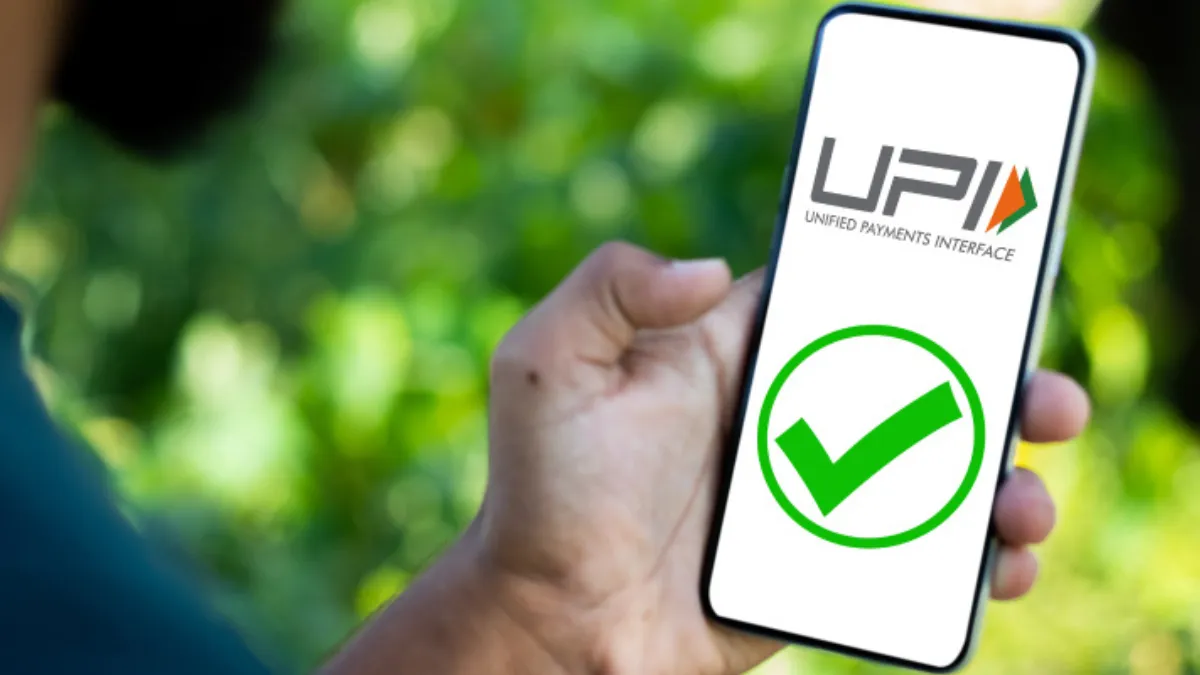Government may announce the new feature tomorrow — Here are answers to 6 key questions users are asking
A major upgrade is on the way for India’s digital payment system. Starting soon, UPI (Unified Payments Interface) users will be able to make payments using facial recognition or fingerprint authentication, eliminating the need to enter a PIN.
According to reports from Reuters, the National Payments Corporation of India (NPCI) — the organization that manages UPI — has completed preparations to introduce this biometric-based payment system. Once officially approved, entering a UPI PIN will become optional, making transactions faster, safer, and more convenient.
The announcement is expected during the Global Fintech Festival in Mumbai, where the NPCI may introduce these new biometric features to the public. Here’s everything you need to know about this breakthrough in India’s digital payment evolution.

1. What Exactly Is Biometric UPI Payment?
Biometric UPI payment allows users to authorize transactions using their unique physical traits — such as fingerprints or facial features — instead of a traditional 4- or 6-digit PIN.
This technology leverages biometric authentication, which is already used in smartphones for unlocking devices or logging into apps. It ensures that only the genuine user can complete a payment, as fingerprints and facial patterns are extremely difficult to replicate.
In simple terms, instead of entering your UPI PIN, you’ll just scan your face or fingerprint to complete a payment. This makes the process quicker, more secure, and more user-friendly.
2. How Will the New Biometric UPI System Work?
When a user initiates a UPI payment, their mobile app will now show an additional option for biometric verification. Instead of typing the PIN, they can choose to authenticate using fingerprint or facial recognition.
Here’s how it will typically work:
- You open your UPI app (like Google Pay, PhonePe, or Paytm).
- You select the contact or merchant to pay.
- On the payment screen, you’ll see two options — enter PIN or use biometric authentication.
- You place your finger on the fingerprint sensor or look at the camera for face scan.
- Once verified, the payment will be instantly processed.
This feature will work only on smartphones equipped with biometric sensors or face recognition technology, and linked to the user’s Aadhaar-based biometric data.
3. How Secure Is Biometric UPI Payment?
Security has always been a top concern in digital payments — and this is exactly where biometric authentication shines.
The new system will verify biometric data directly with the Aadhaar database, which is maintained by the Government of India. This means that your face or fingerprint scan will be cross-checked with the data stored in your Aadhaar records before the payment is approved.
This two-level verification ensures that even if your phone is stolen, no one can authorize a UPI transaction without your physical presence. Experts believe this feature will drastically reduce the risk of fraud, phishing, or unauthorized payments.
Moreover, as biometric data is unique and nearly impossible to duplicate, it adds a powerful layer of protection beyond the traditional PIN system.
4. Why Is the Government Introducing Biometric UPI Payments?
There are several reasons behind this digital leap. One of the biggest motivations is enhancing financial inclusion — especially in rural and semi-urban regions where remembering or typing PINs can be challenging for many users.
Experts suggest that biometric authentication could make digital transactions much easier for millions of Indians who already use Aadhaar for various government services. Many people in remote areas have access to smartphones and Aadhaar, but struggle with typing or remembering UPI PINs.
By using fingerprints or face recognition — something they already use for unlocking phones or accessing government services — these users can perform seamless and secure payments.
Additionally, this initiative aligns with the government’s vision of building a “Digital Bharat”, where cashless transactions are simple, accessible, and safe for everyone.
5. When Will Biometric UPI Payments Launch?
According to sources close to the matter, NPCI is expected to launch this new biometric payment feature tomorrow, October 8, during the ongoing Global Fintech Festival in Mumbai.
The NPCI, which manages India’s entire UPI infrastructure, has been testing this technology in partnership with banks and major fintech companies for months.
Once officially unveiled, it will likely be rolled out in phases — starting with selected apps and banks, followed by a wider rollout across all UPI platforms.
If everything goes smoothly, users across India could start using fingerprint and facial UPI payments within weeks after the official launch.
6. Will All UPI Apps Support Biometric Payments?
Yes, almost all major UPI applications are expected to adopt this feature. Initially, it will be available on Google Pay, PhonePe, and Paytm, which are among the most widely used UPI platforms in India.
These apps already have in-built support for biometric authentication for login and verification, so integrating this payment feature should be seamless.
As the rollout expands, other UPI-enabled banking apps — like BHIM, Amazon Pay, and various bank-specific UPI apps — will also get this update.
Other Recent UPI Updates: Higher Daily Limits
In another major development, NPCI has increased the daily transaction limit for UPI payments made to merchants.
Previously, customers could make payments of up to ₹2 lakh per day to merchants. Now, this limit has been increased to ₹10 lakh per day for select categories such as jewelry, hospitals, and educational institutions.
This means users can now buy items like gold jewelry worth up to ₹10 lakh using UPI — a huge leap that reflects India’s growing trust in digital transactions.
Here’s a quick comparison:

| Category | Previous Daily Limit | New Daily Limit | Example Use Cases |
|---|---|---|---|
| Person-to-Person (P2P) | ₹1–2 lakh | Unchanged | Sending money to friends/family |
| Person-to-Merchant (P2M) | ₹2 lakh | ₹10 lakh | Paying for jewelry, hospital bills, tuition fees |
| Government & Tax Payments | ₹2 lakh | ₹10 lakh | Property tax, e-challan, etc. |
These changes will make UPI one of the most powerful and flexible payment systems in the world, capable of handling both small daily payments and large business transactions with ease.
Also read: List of Nobel Prize Winners in India: Names, Fields, and Their Impact
How Will This Change the Future of Digital Payments?
India’s UPI system is already a global success story, processing billions of transactions every month. Adding biometric authentication will make it even more secure, inclusive, and convenient.
Here’s what experts predict:
- Faster Transactions: No need to enter a PIN every time.
- Better Accessibility: Ideal for elderly users or those who face difficulties typing.
- Enhanced Security: Physical presence verification eliminates remote frauds.
- Stronger Global Reputation: UPI could become a model for other countries adopting digital payment systems.
With this upgrade, India continues to lead the world in digital payment innovation, showing how technology can empower millions and strengthen the economy.
Also read: President Murmu to Visit Gir National Park: Safari Opens Early for Historic Occasion
Conclusion: The Next Step in India’s Digital Journey
The upcoming biometric UPI payment system marks a major milestone in India’s ongoing digital transformation. By allowing users to pay using just their fingerprint or facial scan, NPCI is setting a new standard for speed, simplicity, and security in financial transactions.
Once launched, this will make daily digital payments — from buying groceries to paying hospital bills — smoother than ever. Combined with higher payment limits and strong government backing, UPI is set to become the most advanced and user-friendly payment system in the world.
So the next time you pay with UPI, you might not need to remember your PIN at all — your face or fingerprint will be your key.


















